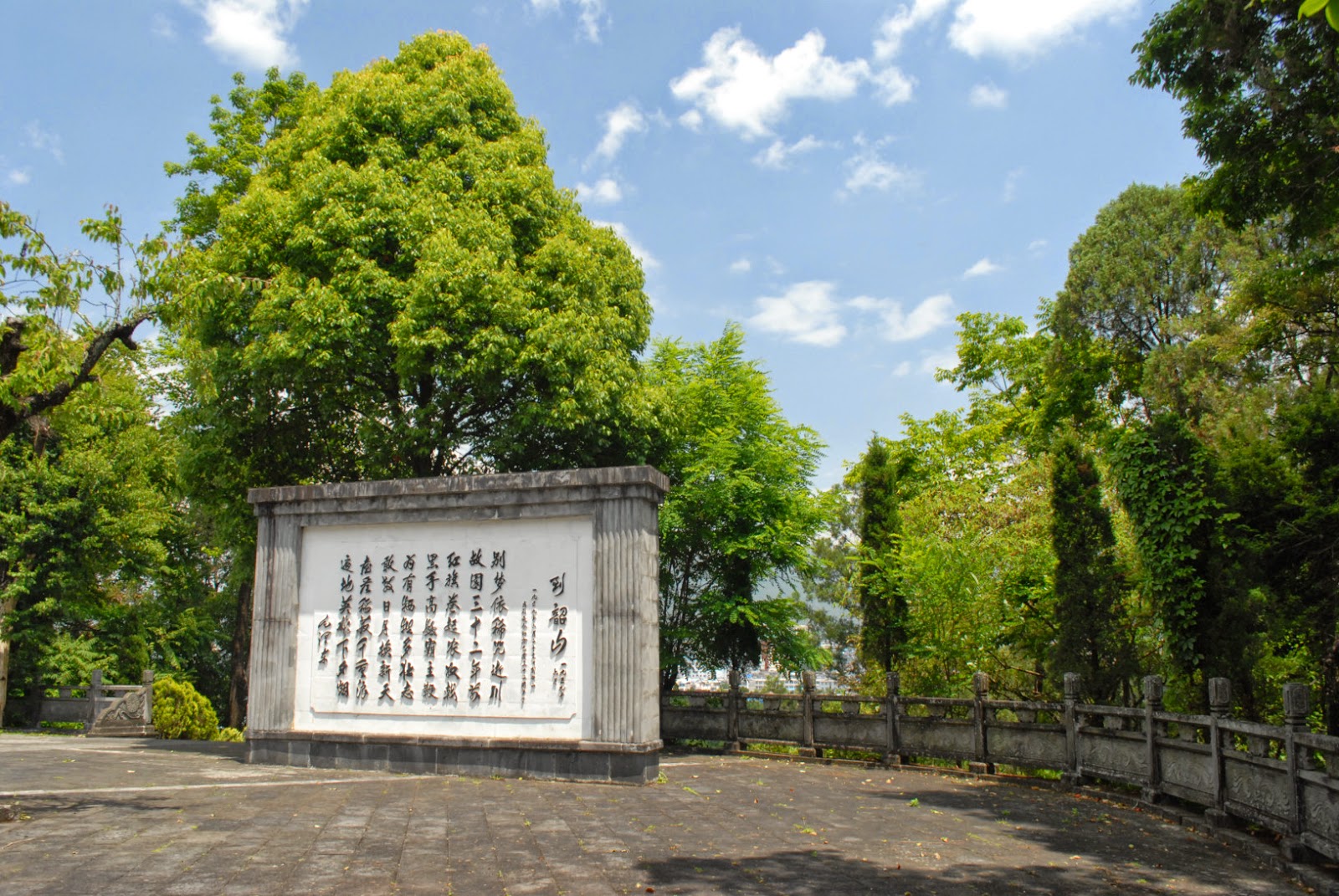I've lived here in Tengchong county for a total of sixth months now (with two month break this winter), but I haven't spent that much time in the city itself. Having had my weekend plans cut unexpectedly short, I joined some other fellows in the city on Friday night and Saturday. We had a wonderful time chatting, eating and drinking delicious things (including pastries, chocolate, a cappuccino, Burmese food, and some red wine), and walking around the city.
 |
This obelisk was built after WW II, commemorating
the founding of the Republic of China in 1912. |
 |
| The nationalist emblem is at the top. I guess Tengchong is so far out of the way that they never tore things like this down. |
We had heard of a waterfall somewhere nearby, so we walked in what we thought was that direction and instead came across a sign for a martyr's cemetery and thought we'd take a look.
 |
Stone lions are common in China,
but this one is a little different. |
 |
| Fellows finding our regions on the battle map. |
 |
| A tribute to Sun Yatsen, cofounder of the Nationalist party, and the first leader of the Republic of China. |
 |
"Honor List of the Ally Soldiers in Sino-Japanese War, Western Yunnan"
"From the summer of 1944 the Sino-Japanese War in Western Yunnan turned into a phase of counterattack.
The Allies sent their army to join and help. In the battle of seizing the city of Tengchong,
Maj. McMurrey and other 18 soldiers devoted their lives. Carved here are their great names for long memories." |
 |
| Plaques for each of the Americans killed in action in China. |
At the back of the property is a little hill on which there are markers for all the soldiers who died in WWII. It was this hill that we could see from the back road.
 |
| Every marker has a red plastic rose next to it. |
 |
| At the top of the hill is yet another obelisk. |
 |
Between the museum and the cemetery is a wall with pictures and text explaining some of the history of the war,
including the American collaboration. |
We did eventually make it to the waterfall. More on that soon.


























Wow there is so much beauty in your region! I wish I could find anything carved out of stone here. I'm so jealous!
ReplyDelete